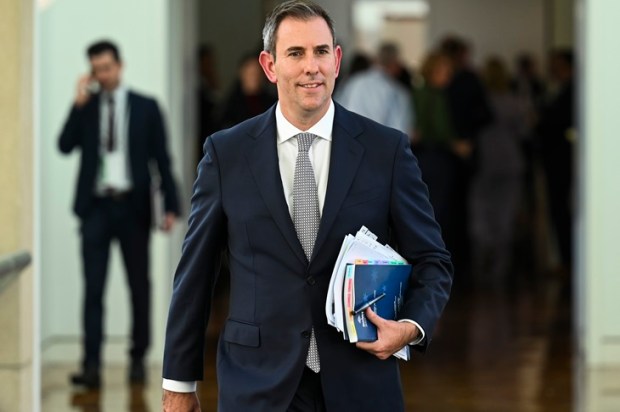The Federal Government’s proposed $2 billion small business loan scheme is the wrong response to a real problem.
The decline of small businesses in Australia presents a substantial policy challenge.
In 2017 there were 6,000 fewer new businesses than a decade earlier, despite Australia’s working age population growing by 20 per cent, according to a recent report by my colleague at the Institute of Public Affairs Matthew Lesh. Over the same time period, the number of Australians employed in a small business declined by seven per cent.
This means many of Australia’s best and brightest are opting to work for larger, more established firms, which are typically less dynamic, entrepreneurial, and innovative than their smaller competitors.
In an attempt to avert this decline, the government has proposed a $2 billion government-run small business loan fund. The fund would buy small business loans issued by non-big four banks and other financial organisations, with the intended effect of expanding the availability of credit to small businesses and lowering its cost.
While the government has its sights set on the right problem, the proposed solution is off the mark. History is replete with examples of government-backed financing going bad, fast.
The State Bank of South Australia, the Victorian Economic Development Corporation, and the State Bank of Victoria via the subsidiary merchant bank Tricontinental all sought to expand the availability of credit to increase growth and all failed spectacularly.
The State Bank of South Australia, for example, was established in 1984 and lasted just seven years before its collapse in 1991 brought the South Australian government to the brink of bankruptcy. The key cause, according to a report by the South Australian Auditor-General delivered in 1993, was “it grew too fast”. Risky lending, lack of oversight, and poor management resulted in the bank taking on too many bad loans.
The Victorian Economic Development Corporation, meanwhile, was so poorly managed that its Board didn’t even have a policy on prudential lending limits and risk exposures, according to a report undertaken by the Victorian government in 1988.
The exemplar of government finance gone bad, of course, is the United States’ Fannie Mae and Freddie Mac which are quasi-government financial institutions. At the behest of government regulation, Fannie and Freddie were forced to purchase a certain number of home loans from low income and minority borrowers to expand home ownership. The problem was that there wasn’t enough creditworthy borrowers for Fannie and Freddie to meet the governments lending requirements. This forced them to lower their lending standards and promulgate bad loans which ultimately brought the US financial system to its knees.
No one is suggesting the small business loan facility would produce a similar outcome in Australia. But the fundamental problems which brought down Fannie and Freddie, and the State Banks of South Australia and Victoria, will plague the small business loan facility.
And that fundamental problem is one of skin in the game.
The risk of lending is not lowered just because it is backed by taxpayers. Rather, the risk is transferred from the private sector to the public at large.
In the commercial world, if a loan goes unpaid and there is insufficient collateral to recoup the loss, then it is the business – its workers, shareholders, and customers – which suffers the consequences. The losses are contained within the sphere of that commercial enterprise, and not socialised to the broader public who had nothing to do with the transaction.
And the prospect of losing money and being out-competed by other lenders provides a powerful incentive to ensure the overall lending portfolio is both profitable and sustainable.
Conversely, there is no market-based incentive mechanism when it comes to government-backed finance. Most likely, the new small business fund will provide lending based not on sound economics, but political favours and cronyism. The temptation to channel funds to politically beneficial causes will be too great and drown out any offsetting commercial liability from such an undertaking.
Rather than funnelling more money we don’t have and injecting yet more government into the financial sector, governments interested in boosting small businesses should instead be more focused on how they can get out of their way.
Study after study shows that red tape, government regulation, and bureaucratic interference are the key enemies of small business. For example, 48 per cent of respondents to a survey published by Westpac earlier this year said that regulation was the highest hurdle to business success in Australia. The next highest response was the 14 per cent of respondents who believed high business taxes was the biggest factor hampering business success.
And it is small businesses that bear the brunt of red tape. They are less likely to have the lawyers, accountants, and human resource departments that are needed to navigate the array of licenses, permits, and conditions needed to set up or expand a business.
Treasurer Josh Frydenberg is right to recall the words of former Prime Minister Sir Robert Menzies who saw small business owners as “the strivers, the planners, the ambitious ones”. But the words of another great leader, former US President Ronald Reagan, are just as important: “government is not the solution to our problems. Government is the problem”.
Small business owners know what they are doing. The best thing the government can do is get out of their way.
Daniel Wild is a Research Fellow with the Institute of Public Affairs.
Got something to add? Join the discussion and comment below.
Got something to add? Join the discussion and comment below.
Get 10 issues for just $10
Subscribe to The Spectator Australia today for the next 10 magazine issues, plus full online access, for just $10.


























Comments
Don't miss out
Join the conversation with other Spectator Australia readers. Subscribe to leave a comment.
SUBSCRIBEAlready a subscriber? Log in